 |
| May 1, 2003 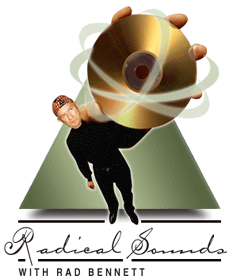 Radical
Sounds: Who’s Got the Time and Why Aren’t They Giving It to Me? Radical
Sounds: Who’s Got the Time and Why Aren’t They Giving It to Me?
There are universal players out now that will play both SACD and DVD-A, but they are still somewhat rare and a bit pricey. The two formats are still fighting for a toehold in the marketplace. It suddenly struck me that DVD-A, in particular, is not using one of the format's very best ploys: longer playing time. The idea came to mind while reviewing the magnificent Mahler 3rd symphony from the San Francisco Symphony in the SACD multichannel format. I loved it, as you will read, but this thought did occur: All the technological progress is still bound by CD length so one has to change discs to hear the whole piece. Movements 1, 2, and 3 are on one disc, while movements 4 and 5 are on the second disc. The total work is about 86 minutes. Immediate thought: EMI got Sir Simon Rattle’s 77-minute Mahler 10th on one DVD-Audio disc, with no breaks. About the time the Mahler 3rd arrived, I received the soundtrack to The Last Waltz on Warner Brothers DVD-Audio. This clocks in at about 2:15, or 135 minutes. Then, I remembered that DTS has in its DVD-A catalog a Handel Messiah complete on one disc at 142:00. EMI released a collection of Bach Cantatas on DVD-A that beats that at 152:35. And what bargains. None of these discs costs any more than a normal, single DVD-A disc (because, I suppose, duh, they are single DVD-A discs!). I am neither lazy nor a couch potato. I can get up to change a disc. But I have always pursued complete musical thoughts. Back when we had only vinyl discs, the first act of Tosca, running around 45 minutes in most performances, had to be split on two sides. I would copy it on reel-to-reel tape or, later, a 90-minute cassette to have the act complete without a break. CD solved many of the problems involved in getting a complete work on a single side, especially as the time envelope was pushed out to 80 minutes. Sir Georg Solti’s Mahler 8th runs 79:34 and can be obtained complete on one CD. DVD-A can beat that, but the advantage is seldom used. Warner released Linda Ronstadt’s What’s New by itself on a single DVD-A. On CD, all three of the singer’s nostalgia albums (What’s New, Lush Life, and For Sentimental Reasons) have been put out on a two-CD set called ‘Round Midnight, running around 121:00. That’s shorter than The Last Waltz, the Handel, or the Bach, mentioned above. It would have been a good selling point to have the complete collection handy on one disc. Perhaps running time is unimportant to you, but surely, it is a positive feature that DVD-A has over SACD, and one wonders why it has not been used more often or promoted. This month saw an inordinate number of great recordings, so instead of the usual three, here are four that made the search worthwhile.
The San Francisco Symphony was already a good orchestra when Michael Tilson Thomas took over as its music director in 1995. Under his leadership, it has become one of the great ones. Every section is solid, every solo player a virtuoso able to shine as a soloist or a valuable contributor to the total ensemble. Its recordings for RCA have won numerous awards, but the Mahler cycle currently underway is surely the greatest accomplishment thus far. The third symphony, a colorful ruminative discourse on life and nature, is scored for a huge orchestra, and supplemented by mezzo-soprano soloist and treble choruses in two of the movements. Often it is played to near hysteria; every note put through an emotional wringer, as in performances by Bernstein and Solti. If their readings are passionate, that of Thomas seems more spiritual. The American maestro lets the music breathe and speak for itself without distortion or extra adornment. Everything seems just right; there is a tremendous feeling of satisfaction when the final chord has been played. Mezzo-soprano de Young has a lovely voice and an obvious understanding of the words she has to convey to the audience. Her singing of Kindertotenlieder, the song cycle based on poems concerning the death of children is heartfelt and effective. For his recordings, Thomas has worked almost exclusively with producer Andreas Neubronner, who does not let him down here. It boggles the mind to realize that these recordings were done from live performances, for there is no distracting audience noise or applause. The 5.0 SACD sound is rich and full, with generous, yet not excessive reverberation. The front stage has good depth and width, with woodwind solos that shine forth without gimmicky spotlighting. The 2.0 mix is excellent as well, but to experience the full glory of this recording you really need to hear it in 5.0. This is advanced-resolution multichannel sound at its very best. Already released in the series are the first symphony [821936-0002-2] and the sixth [821936-0001-2], which recently won a Grammy Award.
Many of the advanced-resolution multichannel discs that have come out so far have been re-mixed by hands, and ears, other than those belonging to the original creators. Sure, the artists have "signed off" on the new tracks, but it is not the same as getting down and dirty in the studio. This DVD-A disc, then, is refreshing in that it offers new mixes by the original producer of Emmylou Harris’ earlier Warner albums, Brian Ahern. Ahern has chosen 14 cuts for this new disc that he feels best adapt to surround sound. They include such favorite’s as "If I Could Only Win Your Love," which receives mostly ambiance in the rear channels, and "Boulder to Birmingham," a beautiful and discreet mix for a really lovely song. There’s also "Too Far Gone," "Tulsa Queen," "Poncho and Lefty," "Beneath Still Waters," "The Last Cheater’s Waltz," and a never-before-released duet with Johnny Cash on "The Old Rugged Cross." Most of the new mixes make artistic sense. In "The Last Cheater’s Waltz" Emmylou and most of the instruments are up front, with Sharon and Cheryl White on backing vocals in the left and right surrounds. After the song ends, there’s a little tag passage for the band ("Closing time, folks, don’t care where you go, but you can’t stay here"), as much of the sound shifts to the rear channels where it becomes a memory of what was just heard, with just a solo fiddle up front. This intricate manipulation of sound is one of the best examples of imaginative and effective surround that I have heard. If you just don’t like any music behind you, there’s a demonstration-caliber two-channel mix, as well as Dolby Digital and DTS tracks for those who don’t have a DVD-Audio-capable player yet. But those DVD-Audio tracks, stereo or multichannel, are really worth it on this release. Seldom have dobros, slide guitars, and fiddles sounded so natural. Since the disc is DVD, it is also able to contain a video interview with Ahern in which he discusses his ideas for the disc, as well as a good collection of Emmylou photographs.
Since Mobile Fidelity Sound Labs was one of the leaders in bringing audiophile sound to the LP, cassette, and CD formats, one naturally expects a lot from the company in its first SACD releases. No one will be disappointed in this title, just a little surprised that MFSL kept things so simple. This disc, a spare and lonesome collection of songs about the mobility of Americans, is recorded in what I like to call "honest" sound. I mean that in the best sense. There is nothing gimmicky about this acoustic set. The microphones are set in place, the levels set, and the musicians take it from there. This folk-tinged disc is a refreshing antidote to something complicated like the new 5.1 mix of Dark Side of the Moon. Alvin’s low, lonesome, balladeer voice, similar to that of Guy Clark, is nicely centered, the instruments spread left and right, with drums behind the singer. My favorite track is the open and exposed "From a Kitchen Table," which adds clarinet and organ as a perfect foil to the more percussive guitar and drum sounds.
It sounds like everyone had a good time making this 1984 program. All the players are spot on, and there is definitely a joi de vivre in the air. Brown is joined by Gene Harris at the piano and Gerryck King on drums to make up the trio. They are accompanied by Emily Remler on guitar and Red Holloway on tenor saxophone on Brown’s own "Mistreated but Undefeated Blues." The title presents a rare opportunity for comparison. It is one of the few available on both Hybrid SACD and DVD-A. Moreover, the DVD has two sides, containing the program at different sampling rates. Counting the CD layer of the Hybrid SACD, there are four versions. It is not a perfect A/B comparison situation, however. Groove Note tells me that equalization has been applied to their SACD, whereas Hi-Res, working from the same master, used none. Therefore, I can only report the results here, further complicated by the use of separate SACD and DVD-A players. The SACD seemed a bit warmer, with brushed cymbals that were just a tad crisper. The Hi-Res DVD-A 96/24 mix won hands down for clarity and clean, well-balanced piano sound, and seemed to catch just a smidgen more of the bass-note attacks. The DVD-A 192/24 seemed just a bit more realistic than the 96/24, and just a touch more transparent. If I walked into the room cold, I would be hard-pressed to identify which of the three mixes was playing. They are all marvelous. But there can be no doubt that any of the trio of tracks lays the CD mix in the dust. Why some people say they cannot tell the difference between CD and the high-resolution formats is beyond me. All of the versions are a tribute to late producer Carl Jefferson, who created one hell of a fine recording during these sessions. The DVD-A’s 96/24 mix, by the way, will play on many DVD-V players that are not DVD-A equipped. ...Rad Bennett
Ultra Audio is part of the SoundStage! Network. |
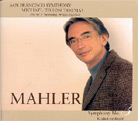 Mahler: Symphony No. 3 in
D Minor; Kindertotenlieder
Mahler: Symphony No. 3 in
D Minor; Kindertotenlieder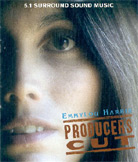 Emmylou Harris: Producer’s
Cut
Emmylou Harris: Producer’s
Cut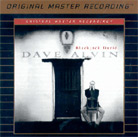 Dave Alvin: Blackjack
David
Dave Alvin: Blackjack
David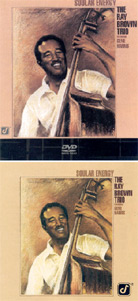 Ray Brown Trio: Soular
Energy
Ray Brown Trio: Soular
Energy